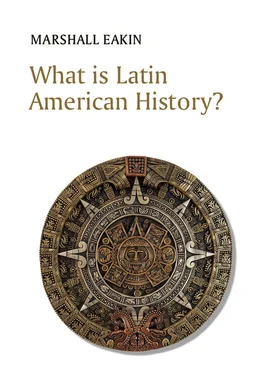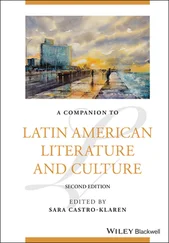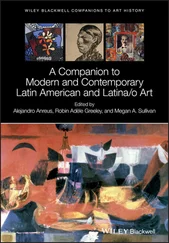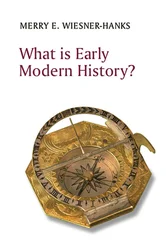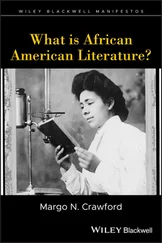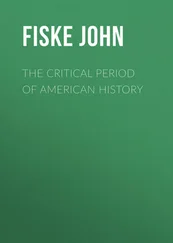Marshall Eakin - What is Latin American History?
Здесь есть возможность читать онлайн «Marshall Eakin - What is Latin American History?» — ознакомительный отрывок электронной книги совершенно бесплатно, а после прочтения отрывка купить полную версию. В некоторых случаях можно слушать аудио, скачать через торрент в формате fb2 и присутствует краткое содержание. Жанр: unrecognised, на английском языке. Описание произведения, (предисловие) а так же отзывы посетителей доступны на портале библиотеки ЛибКат.
- Название:What is Latin American History?
- Автор:
- Жанр:
- Год:неизвестен
- ISBN:нет данных
- Рейтинг книги:4 / 5. Голосов: 1
-
Избранное:Добавить в избранное
- Отзывы:
-
Ваша оценка:
- 80
- 1
- 2
- 3
- 4
- 5
What is Latin American History?: краткое содержание, описание и аннотация
Предлагаем к чтению аннотацию, описание, краткое содержание или предисловие (зависит от того, что написал сам автор книги «What is Latin American History?»). Если вы не нашли необходимую информацию о книге — напишите в комментариях, мы постараемся отыскать её.
What is Latin American History? — читать онлайн ознакомительный отрывок
Ниже представлен текст книги, разбитый по страницам. Система сохранения места последней прочитанной страницы, позволяет с удобством читать онлайн бесплатно книгу «What is Latin American History?», без необходимости каждый раз заново искать на чём Вы остановились. Поставьте закладку, и сможете в любой момент перейти на страницу, на которой закончили чтение.
Интервал:
Закладка:
This short book traces the development of the field of Latin American history with an emphasis both on recent decades and on Anglophone scholarship, for two key reasons. First, its principal audience is in the United States and the United Kingdom. Second, the historical literature produced in Latin America is so vast and diverse that it would be impossible for one historian (from anywhere in the region) to do it justice. Throughout this volume, I will discuss trends in the United States, Europe, and Latin America, but the emphasis is on work in English. In the endnotes, I note some examples of key works, but I do not attempt to be comprehensive in my citations.
One of the objectives of the historian is to attempt, however imperfectly, to recover the past to understand who we are by seeing from whence we came. Who we are – as individuals, societies, nations – bears the traces of decades, centuries, even millennia of historical processes and events. Contemporary Latin America cannot be understood without a deep knowledge of at least five centuries of these processes and events. In this slim volume, this historian turns to the past to understand the field of Latin American history, its origins, patterns, and multiple paths. Just as one cannot understand Latin America today without the long view of how we arrived at this moment, the historian of Latin America cannot fully appreciate the field without looking back over the decades and centuries to appreciate the many converging and diverging paths. This is a field that has long been open to influences from multiple disciplines and approaches on multiple continents. My hope is that this brief survey provides some insights into the creation, development, complexities, and fragmentation of the field of Latin American history.
The first chapter grapples with a central conundrum – how to define this region called Latin America. Those in the humanities and social sciences who study this region cannot even agree on a definition of the term. Increasingly, those in cultural studies have argued that the very notion of a region called Latin America is an illusion, one created out of imperial and Cold War struggles, a term flawed from the beginning, and one that we should discard. Chapter 2then traces the origins of the field in the work of what I call “gentlemen scholars” in the nineteenth century and the growth of small academic communities in North America, Europe, and a few nations of Latin America before the First World War. The professional field in the United States begins to emerge gradually in the first half of the twentieth century and, by the 1950s, the Cuban Revolution and U.S. responses to the rise of leftist revolution in Latin America spurred a boom in Latin American studies. The following four chapters are largely thematic with a touch of chronological order. In the 1960s and 1970s, the historical profession, in general, and Latin American history, in particular, took a social and economic turn. Historians moved away from the history of high politics, diplomacy, and warfare to emphasize social classes, “history from below,” and quantification. Structure came into vogue as historians of Latin America counted, tabulated, and computed prices, wages, and economic indicators and sought to uncover foundational economic and social structures. Chapters 3and 4look at the social and economic turns.
By the late 1980s, the wave of social and economic history, especially quantification, faded, and (along with much of the profession) historians of Latin America took the so-called cultural turn, especially in the United States. Shunning structures and meta-narratives, they honed in on identities, race, ethnicity, and cultural analysis. Rather than constructing narratives of nations and structures, they turned to agency and micro-history. Chapter 5analyzes these trends. Chapter 6turns to the diverse trends within Latin American history over the past two decades. The dominance of the cultural turn has eased as new forms of social and political history have emerged. An emphasis on the imperial, transnational, regional, and global has emerged, represented most dramatically by fields such as borderlands and Atlantic world history. Most striking has been the continually rising production and expansion of the academic communities in Latin America over the last two generations. In the epilog, I return to the idea of Latin America, the increasing diversity of the countries and peoples in the region, and the challenges of writing the history of Latin America in the future.
1 What Is Latin America?
Latin America is a conundrum, a statement that applies to both the region and the name. The dimensions of the region are unclear, the name a misnomer, and, for some, the place does not even exist. Thousands of scholars on several continents study Latin America. In the United States, the broader field of Latin American studies has been vibrant and growing for decades. Every four years, the U.S. Department of Education awards millions of dollars to about fifteen “national resource centers” in Latin American studies. Yet, no one seems to like the name for this region of the world, and a growing number of academics have even declared that the very idea of Latin America is a fiction invented by European and American elites. If they are correct, the field of Latin American history is an illusion. Even those who argue for the usefulness of the term (despite its flaws) cannot agree on a definition of just what it encompasses. Moreover, as the many nations in the region continue to develop in the twenty-first century, it will be increasingly difficult to discern strong similarities that hold them together as a coherent and meaningful regional unit. In short, we may be able to speak of Latin America’s history, but it may not have much of a future.
The name Latin America, or, more precisely in Spanish and Portuguese, América Latina , does not even appear in print until the mid-nineteenth century. Three hundred and fifty years earlier, when Christopher Columbus came ashore on the islands of what he called El Mar Caribe (the Caribbean Sea), he firmly believed that he had arrived on the eastern shores of the Indies (Japan and China). A German cartographer, Martin Waldseemüller, produced one of the first maps of the region in 1507. He had read the accounts of Florentine navigator Amerigo Vespucci’s transatlantic voyages, believed he had discovered this new world, and proceeded to designate this “new” landmass America in his honor. The great cartographer later regretted his error and removed the designation from his maps, but the name has stuck with us now for more than five centuries.
The lands and peoples of the Americas presented a major intellectual challenge for Europeans. They did not appear in the two most important authorities in Western civilization, the Bible and the classical writings of the Greeks and Romans. For many decades after the “Columbian Moment” the Europeans would puzzle over how to explain their absence from these foundational sources and how to fit them into their worldview. 1Were these “Indians” descendants of the Lost Tribes of Israel? Were they humans? Did they have souls? Europeans often referred to the Americas as the “New World” to differentiate it from the “Old World” of Europe, Africa, and Asia, continents they had long known. The Spanish crown gradually created a vast bureaucracy to govern their new colonies as they took shape and, following Columbus, called the region the Indies ( las Indias ).
This vast geographical region of North, Central, and South America and the Caribbean was home to possibly 75 million or more native peoples in 1492, peoples Columbus (mistakenly) called Indians ( indios ), another name that stuck. The Native American population declined dramatically, possibly by as much as 75 to 90 percent in the sixteenth century, largely from diseases that arrived from Europe and Africa (smallpox, measles, influenza, plague, malaria, yellow fever). The populations of indigenous peoples began slowly to recover from this staggering demographic catastrophe in the seventeenth century. During four centuries of conquest and colonial rule, Europeans brought at least 12 million Africans across the Atlantic in chains to provide enslaved labor on plantations and in mines, and to work in nearly every aspect of colonial life. Slave traders shipped the vast majority of these Africans (around 80 to 85 percent) into the Caribbean basin and eastern Brazil. Probably fewer than 1,500 Spaniards and Portuguese per year arrived in the region over the course of the sixteenth century and during the remainder of the colonial period. Consequently, when the wars for independence erupted in the early nineteenth century, the estimated 25 million inhabitants of the region probably consisted of about 15 million Native Americans, about 3 million people of European descent, 2 million enslaved people of African descent, and about 5 million people of racially mixed heritage. Even after three centuries of colonialism and exploitation, more than half the inhabitants of what we now call Latin America were Native Americans, and only a little over 10 percent were persons who claimed European (or Latin) ancestry. The vast lands the Spanish and Portuguese claimed stretched from what today is the southern tier of the United States (California to Florida) to Tierra del Fuego. With the rise of the French, English, and Dutch empires after 1600, these European powers seized control of many Caribbean islands (such as Jamaica, Barbados, Saint-Domingue, and Curação) and enclaves on the American mainland (such as the Guianas, Belize, and, eventually, Louisiana).
Читать дальшеИнтервал:
Закладка:
Похожие книги на «What is Latin American History?»
Представляем Вашему вниманию похожие книги на «What is Latin American History?» списком для выбора. Мы отобрали схожую по названию и смыслу литературу в надежде предоставить читателям больше вариантов отыскать новые, интересные, ещё непрочитанные произведения.
Обсуждение, отзывы о книге «What is Latin American History?» и просто собственные мнения читателей. Оставьте ваши комментарии, напишите, что Вы думаете о произведении, его смысле или главных героях. Укажите что конкретно понравилось, а что нет, и почему Вы так считаете.
